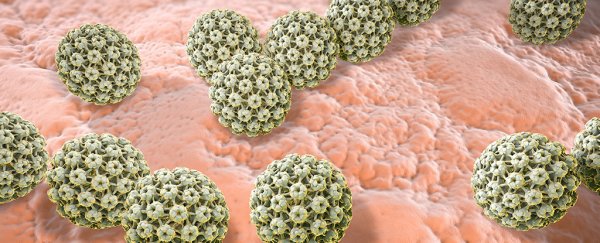For over half a century, the Pap smear test has been the principal method for detecting abnormal cells that could lead to cancer of the cervix.
That is slowly changing as screens for the human papillomavirus (HPV) have been found to do a better job at detecting potentially cancerous cells, even among women who have been immunised against the virus.
New research led by Cancer Council New South Wales, Australia, has added to mounting evidence supporting the use of HPV screening as a way to detect the precancerous cervical lesions that could develop into a life-threatening illness.
Around 100 different types of human papillomavirus lurk inside at least half of the population, making it one of the most common examples of sexually transmitted infection around.
The virus is usually asymptomatic, but in an unlucky few it can develop into genital warts or – far more tragically – one of several forms of cancer, including that of the anus, penis, and cervix.
Early signs of a potential cervical cancer have traditionally been spotted by finding odd looking cells in a sample of tissue taken in examinations every two years.
The so-called Pap smear test, developed early last century by a cytologist named George Papanicolaou, can inform an intervention that increases the chances of curing the cancer from 66 to 92 percent.
Thanks to a handful of studies conducted in recent years, it turns out that identifying the presence of one of the viruses responsible for around three quarters of all cervical cancers could provide as much as 70 percent better protection than the old cytology screen.
Detecting the pathogen is often done through a relatively straight-forward DNA screen, where a sample of cells taken from the genitals or cervix is sent off to a laboratory for analysis.
A positive result means it's time for a closer look, one that could mean identifying precancerous cells that would otherwise be missed.
From December 2017, Australian women between the ages of 25 and 74 will be advised to get a cervical screening based on the HPV test once every five years, rather than the once-every-two-years Pap test.
In spite of the pile of evidence supporting it, there is still the question on whether Australia's HPV vaccination scheme might affect the detection rate.
Australia was the first country to introduce a national program in 2007 for vaccinating young adolescent women against two common human papillomavirus strains.
The program has been credited with not only reducing the prevalence of the virus itself by as much as 90 percent, but lowering the incidence of cervical abnormalities in young women by almost half.
To assess any potential impact the vaccinations might have had on the HPV screening method, the researchers used data from just under 5000 volunteers participating in a pilot study designed to compare detection methods.
Participants were randomly divided into three groups; one that simply involved a traditional cytology screening, and two that responded to positive results for one of the HPV vaccination strains by requiring a closer inspection with either a colposcopy or cytology screening.
Each group was then tracked for referrals and detection of abnormal cells.
The results reinforced the previous findings – looking for HPV did a far better job at drawing attention to precancerous lesions than a Pap smear on its own.
"This adds to existing evidence about how much more effective HPV screening is," says lead researcher Karen Canfell from the Cancer Council New South Wales.
"We now have a superior method for detecting high-grade cervical precancerous abnormalities – this will provide increased protection to women against developing invasive cervical cancer later in life."
More importantly, there was no significant difference in detection rates among those who had the vaccine.
This is good news for those countries looking to follow in Australia's footsteps by developing broad-reaching HPV vaccination programs.
But it's also reassuring that those who have had the vaccine can still benefit from the more accurate screening method.
"This research should reassure clinicians and women that HPV testing will increase the chance of detection of a precancerous cervical lesion by around 10-fold," says HPV and vaccination researcher Rachel Skinner from the University of Sydney, who wasn't involved in the research.
If you're still confused about how this affects you, book an appointment with your doctor for a chat.
Even if you're a guy – with up to 80 percent of us carrying the virus, HPV is everybody's problem.
This research was published in PLOS Medicine.
